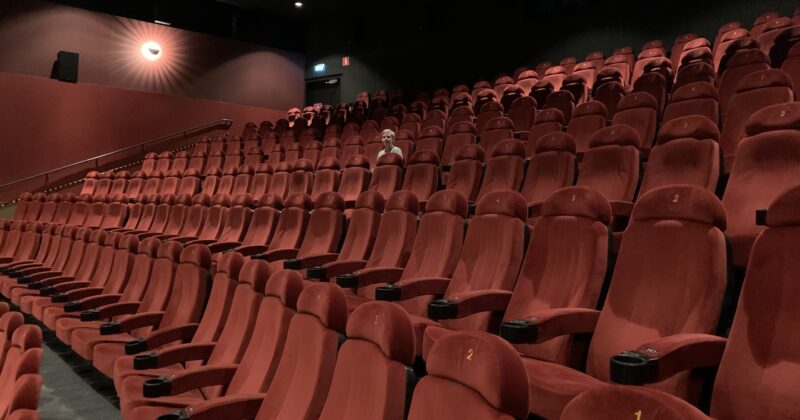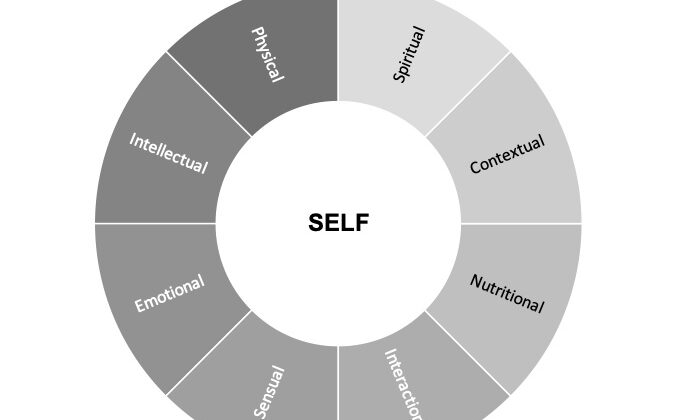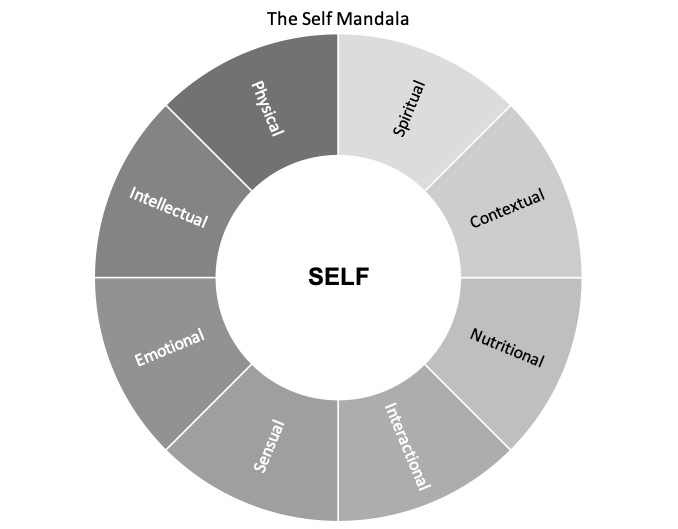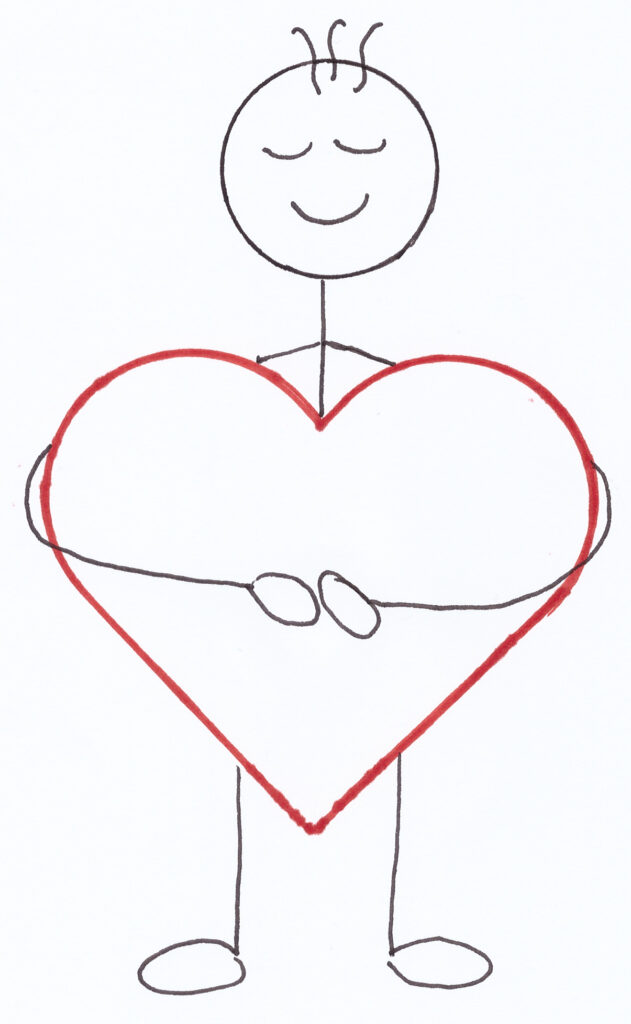As described in previous posts, Congruence comes from balancing Self with Other and Context. This post goes more into depth (pun intended) about the depth of Self.
Whereas the Self Mandala from my previous post shows the breadth of what Self entails, the Personal Iceberg is a metaphor for the depth of Self and about caring for Self on all different levels. Each level represents a layer of experience that will affect the ones above it. Similar to the way an iceberg is mostly hidden beneath the surface, most of what we experience is hidden beneath a surface of our actions and behavior. At a first glance it is impossible for a bystander to see what is going on behind the actions of another person. Actually, most of the time we ourselves are blind to why we act and react in certain ways. To get below the surface we must often ask ourselves and others a series of (sometimes uncomfortable) questions.
The Personal Iceberg consists of many different layers of experiences that each explain part of who we are and who we want to be. The core of the iceberg is the Self, who we are: “I AM”. No matter what our belief system is, there is something that defines us uniquely as individual living beings, something that symbolizes our life force. This what all the other layers are formed around and externalize.

The layer closest to the Self is our Yearnings, our longing for acceptance, love and validation. We all share these yearnings but our tools for having them fulfilled will vary profoundly depending on the circumstances we have been given since birth. If we had these needs met as kids, we will be more likely to have the self-esteem and agency needed to show the world that we are worthy of having them met in the future. Being closest to our true Self, our yearnings are also our most vulnerable point. It is difficult to get more vulnerable than when asking for love and acceptance from other people. Luckily, this is also where most of us are willing to meet other people since it is such a universal need that we all can identify with.
Above our yearnings lie our Expectations. This is what we expect from the world based on our previous experiences, good or bad. Some of us expect the world to be fair while others expect it to be unfair. Having experienced a lot of unmet expectations as a child can lead to shifting the expectations toward what we might have become used to. Another source of expectations are comparisons with other people, we want to have what other have as well.
There is a paradox in here that seldom works in our favor when we fail to voice our expectations; when we expect the world to be good and fair, we are presuming that the world will change for us without us changing internally, and when we expect to be treated unfairly we might actually help in driving that behavior. “She never does what I asks for so this time I won’t help her out.” This will perpetuate and validate assumptions that don’t need to be true but we are making them come true for us.
Giving our expectations a voice is often a great way to clear misunderstandings and to prevent them from happening at all. But we also need to cope with not getting them met at all times. The latter however, is usually easier to do if we can talk about them openly.
On top of our Expectations lies the layer that represents our Perceptions. Perceptions, or beliefs, values and thoughts, are the things we think that we think we know based on the (limited) perspectives that we have had so far. We all hold a large number of things for true because that is how we have perceived them during our encounters. Some of them will probably hold true under scrutiny but a lot of them are probably misunderstandings on our part. The perceptions we hold can be both about ourselves as well as others and the world around us. They can include factual as well as moral beliefs. This is also where we hold, what Chris Argyris called, our espoused theories (I will return to this concept in a later post). Argyris separated our theories in action, what we actually do, from our espoused theories, what we want to do because it aligns with our values. We will return to discuss this more in depth later in the book since having a value system that does not match our actions is a common source of incongruence.
The next two levels are a two-fold dimension that contains our Feelings as well as our Feelings About Our Feelings. The first one might be more intuitive but the second one often plays a bigger part in defining us. Let us take them one at a time.
Our feelings are mostly reactive and based in our past. We can relive our feelings when similar events take place far apart in time. Many of us also struggle with a language for our feelings. We tend to mix our thoughts and feelings because of the language that we use. I have often said that feelings are like salads; it doesn’t become one just because you put the word next to it. An “ice cream-salad” is not a salad in much the same way as “I feel like having a cup of coffee” is not a feeling. The former is still ice cream and the latter is a thought. When we have a language that clearly expresses feelings it becomes easier for us to hold them up to the light and try to figure out what to do with them.
As if feelings were not difficult enough in themselves, we also have to deal with the stigma of a lot of them. Our feelings are often surrounded by complicated rule systems that have been formed by culture, family, friends and our own expectations on ourselves. This means that we also have to deal with our Feelings About Our Feelings. The unwritten and usually unnamed rules that we have learned growing up will limit our set of actions on a daily basis. Most of these rules made sense at some point in time but they became a problem for us when we made them rules and our only choices. Examples of these rules can be “boys don’t cry” or “always look cheerful”. Satir called them “family rules” or “survival rules” since we learned many of them from our families and the importance of them as children were often perceived as of life or death importance since we were so dependent on the people around us for survival. Our feelings about our feelings will strongly filter our responses to what happens around us and often drive incongruent behavior where our actions don’t align at all with our feelings.
At the surface level of the iceberg are our strategies for Coping with ourselves and the world around us. There are several patterns for coping under stress that I will describe in later posts but this is where they manifest themselves. When we are subjected to some stimulus, most of the time we have a bag full of goto-responses that we pick from without giving them much thought. These are pre-filtered approaches that might have been, or at least seemed, successful at some time in the past but usually stand in our way when they become our only options.
On top of this is the Behavior that we expose. The behavior is the physical responses that we share with the rest of the world but they are all based on the underlying layers that are parts of our personal history and who we are.
Congruence in our behavior and actions starts with recognition and acceptance of who we are beneath the surface. The depth of our Congruence determines its potency.





